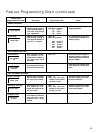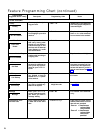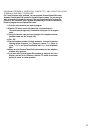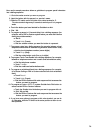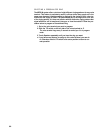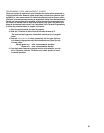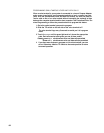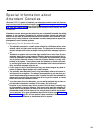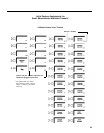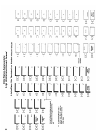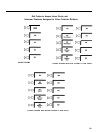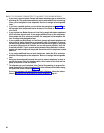
Special Information about
Attendant Consoles
When the
MERLIN
system is installed, your attendant consoles come with features
that are convenient for most businesses (see initial feature assignments for small
and large attendant consoles, pages 85 and 86). The Attendant’s Guide: Models 1030
and 3070 with Feature Module
4 describes all the attendant console features and how
to use them.
Attendant consoles seine you best when they are customized to handle the calling
patterns of your business. Procedures for assigning system options and individual
features are the same for attendant consoles as for the other voice terminals in your
system.
Keep in
mind, however, that attendant consoles always have a square line
arrangement, even in pooled systems.
Programming Tips for Attendant Consoles
●
●
●
●
●
●
The attendant console for a small system should be a 34-button deluxe voice
terminal, which has lights next to every button. The lights next to Auto Intercom
buttons indicate which voice terminals are busy and which message lights are
on.
Attendants in systems with more than eight outside lines or more than 20 voice
terminals should have a large console (34-button deluxe voice terminal that in-
cludes an Attendant Intercom Selector). The system will automatically assign
one of the Auto Intercom buttons on the Auto Intercom Selector to every voice
terminal in the system.
These
buttons allow the attendant to transfer calls easi-
ly, and the lights beside the buttons tell the attendant which voice terminals are
busy and which message lights are on.
If your system is set for more than eight lines, you cannot program any Auto In-
tercom or Manual Signal buttons on a small console.
You probably want attendant lines to ring immediately when a tail comes in,
but there may be exceptions. For example, some people may not want their per-
sonal lines answered by someone else. If you do not want the attendant to
answer calls on certain lines, set these lines not to ring on the console, or remove
those lines from the attendant console.
if
you have more than one attendant, you can assign delayed ring to lines on
one attendant console as a backup for the other, and vice versa.
Someone in your business may have a personal line that doesn’t normally ring
at the attendant’s console. However, that person may want the attendant to
answer calis on the personal line when he or she is out of the office. in that case,
the attendant needs a Cover button for the voice terminal to which the personal
line is assigned. (For more information about Cover buttons, see "Assigning
Cover Buttons," page 69.) A Cover button is also necessary if the attendant is
expected to cover intercom or transferred calls for anyone.
83



